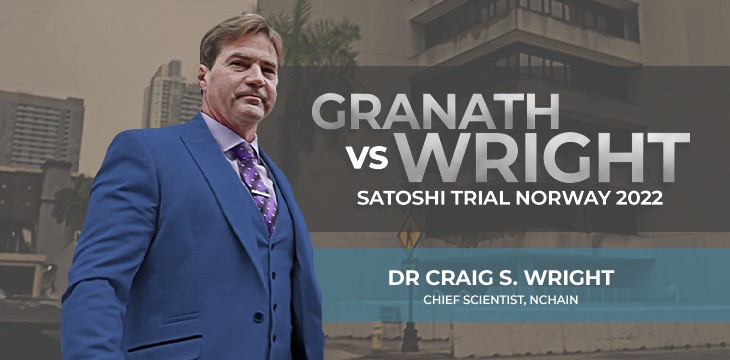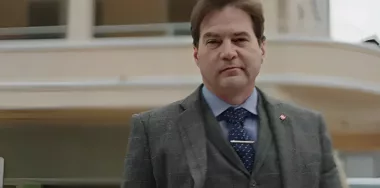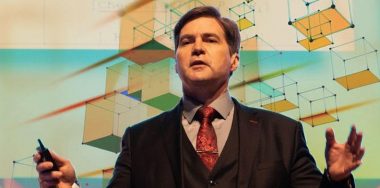We urge anyone with an interest in Bitcoin history to watch Dr. Craig Wright’s complete court testimony in Norway. The comments, made during his defense against plaintiff Marcus “Hodlonaut” Granath, are a thorough recollection of the Bitcoin story from its creator. They also do a great deal to explain the reasoning behind Bitcoin’s existence, its original use cases… and hint at why many continue to spread misinformation about Dr. Wright’s work.
The four hour-long testimony (it’s worth it) begins with some now-familiar background about Dr. Wright’s family, his grandfather’s role as a codebreaker in WWII, and the impact this had on Wright’s career. He also gives graphic details of the threats against his wife and daughters, and the personal pain he felt from Granath’s social media campaign to discredit him. This campaign, after all, is the reason the trial is happening at all.
Dr. Wright also details his work at Lasseters Online Casino and auditing firm BDO, law enforcement agencies, and how those experiences led him to begin research work on a distributed, timestamped, digital tokenization system in the form of digital cash. This work itself took a toll on his first marriage, since Wright left a well-paying job to embark on a resource-consuming pursuit with no guarantees of success.
He initially regarded the Bitcoin system as a product he could sell to a major corporation, and held negotiations with both BDO and Microsoft. Both turned him down. Attempts to claim R&D expenses eventually led to a multimillion-dollar dispute with the Australian Tax Office (ATO), which served as the source of Dr. Wright’s “outing” as Satoshi in 2015 and several other accusations since.
Wright’s ‘sidebar’ comments tell much of the story
Dr. Wright frequently inserts long “sidebar” comments into his responses, taking various issues tangential to Bitcoin’s nature and its history. Throughout his testimony he speaks his mind on ICOs, NFTs, encryption, Bitcoin traceability/auditability, the true meaning of “decentralization” and “peer-to-peer,” microtransactions and block sizes, “small-world” networks, and blind trusts.
Although both Dr. Wright’s and Granath’s lawyers often interject to curtail them, these sidebars serve two purposes. One is to show his depth of knowledge on the topics and explain concepts that have been misused. The other is to ensure these comments now exist on permanent, sworn and public record. They are topics important to Bitcoin and the purpose it needs to fulfil, and a record of how many of the concepts have been twisted by others to suit their own purposes.
One significant sidebar comment explains some important points about Bitcoin’s nature:
“The whole point I’m trying to make, and I’m going to make, is Bitcoin is not encrypted. Bitcoin can be seized, Bitcoin can be frozen. Bitcoin acts within the law. There’s a lot of misinformation from BTC maximalists who want to go back to drug markets, child porn, pedophilia—and they don’t want legal enforcement of Bitcoin. I want to make sure judges and courts understand, that Bitcoin is not encrypted and it can be seized, frozen and accessed under a court order. I want to make sure that the lies about thousands and thousands of nodes are understood. And that people understand that BTC has fifteen nodes, three of which control fifty-nine percent of the hash power today.”
Segments of Dr. Wright’s testimony suggest the value of the intellectual property he has created has more meaning to him than the market value of his Bitcoin. This includes the Bitcoin protocol itself, as well as other systems and processes he has invented—some of which run on Bitcoin, and some pre-dated it. He describes how, in the early days of his “outing” as Satoshi, his priority was protecting his IP as “it was the most valuable thing I had.”
Under cross-examination, Wright explains how he structured “Satoshi’s” keys first into encrypted key segments, and then into the Wright International Investments company, and formal blind trust he regained control over in 2020. This process was to protect his intellectual property against the Australian Tax Office (ATO), which had regarded his Bitcoin research “as a stupid hobby” with no value, but later was threatening to bankrupt him.
Dr. Wright, as he describes in the testimony, has an extensive background in digital forensics and audits. After creating Bitcoin, he initially thought of it as a product to deploy to make auditing operations easier, as a timestamping and digital proof system. He was thinking more about tokenizing physical products and assets, using simple digital cash as the proof of concept. Hard-coding the now-famous Times headline “Chancellor on brink of second bailout for banks” was itself a timestamping mechanism, proving nothing could have occurred on the Bitcoin network before that date.
His personal reluctance to “come out” as Satoshi is clear, both before and after the involuntary revelations in WIRED and Gizmodo‘s 2015 articles. The struggle continued well after it was decided to formally connect Wright and Satoshi, with Wright often feeling like he was being pressured to prove something he didn’t want to prove, and wanting to regain control over his life.
Cross-examination gives the opposing view
The second half of the video is Dr. Wright’s cross-examination. Granath’s counsel’s questions mainly pick at details in the history Wright described in the earlier testimony, as well as pick at details in emails and other correspondence, and how well he remembers them. Wright’s demeanor changes as the questions continue, particularly as Granath’s counsel reads from Jameson Lopp’s long article “debunking” each of his claims. His answers are more combative and he is clearly annoyed at having to explain them in the face of continuing accusations from his detractors.
The questions concern several accusations made in efforts to debunk Dr. Wright’s claims over the years, in his Wikipedia entry and online articles written by adversaries. One such claim counters Wright’s testimony that he has “never been convicted of anything.” When counsel points out that Wikipedia refers to a previous contempt of court “conviction” in New South Wales, Wright points out that this is not a criminal offense in Australia, and therefore not a conviction. He earned a community service penalty after he “was rather belligerent on the stand” during proceedings involving the ATO.
One simple but significant question is whether Dr. Wright ever “had access to” Satoshi Nakamoto’s Bitcoin private keys (defined as blocks 1-12 for the court’s purposes). Dr. Wright says he doesn’t have them now, but the question of whether he ever had them is complex: Bitcoin allows for multiple parties to have portions of a cryptographic key, and that individuals may have proof of these key portions without ever necessarily knowing the exact characters they contain.
It’s notable that Dr. Wright’s opponents usually distill their arguments down to the most basic “does he have the Satoshi keys or not?” question—yet as Wright reiterates in his testimony, words like “have” and “own” become more complicated where Bitcoin, trusts, and corporate structures are involved. Therefore, the core question “Is Craig Wright Satoshi Nakamoto?” cannot possibly be answered with an easily accessible set of Bitcoin keys. Unfortunately, these explanations frequently fall on deaf ears—another reason it’s important to have them on court record.
“What would it take to gain access to the private keys?” counsel asks. “What I’m trying to explain is, you don’t need to,” Wright replies. “I had the algorithm that could calculate the private keys.”
For several years Dr. Wright was trying to protect his IP, assets, and hide his role in Bitcoin’s creation, rather than prove it. To do this he created a multi-layered structure of corporations, trusts and legal arrangements, which he is now required to explain in order to unravel Bitcoin’s history. Under lawyers’ questioning it’s like watching a reverse-engineering attempt, performed by people who understand neither the end product nor the engineering involved, and explained by a creator clearly reluctant to reveal everything. Interspersed with the technical details are often very personal stories of business and private relationships, life crises, and motivations that have affected the outcome.
This series of complete video testimonies highlight the human side of Bitcoin story. As much as we’ve heard the claim “code is law” and similar from the cypherpunk and blockchain communities over the years, this is far from true. A world of humans remains, and must remain, under human law. Bitcoin was created by humans to serve humanity. The Bitcoin network functions due to economic incentives on human actions. Likewise, there are many actions outside the network that also determine outcomes. This trial is an example of one of them.
Watch Granath vs Wright Satoshi Norway Trial Coverage Livestream Recaps on the CoinGeek YouTube channel.
New to blockchain? Check out CoinGeek’s Blockchain for Beginners section, the ultimate resource guide to learn more about blockchain technology.










